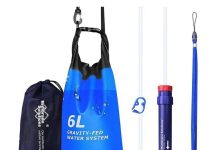Dividend investing has long been a favorite strategy for investors seeking steady income and long-term portfolio growth. However, not all dividends are created equal. That’s why focusing on sustainable dividends, payments that a company can consistently make without jeopardizing its financial health. This guide explores what makes dividends sustainable, how to identify them, and strategies to incorporate them into your portfolio.
The Importance of Sustainable Dividends
For investors, sustainable dividends are a source of reliable income and a sign of sound financial management. Understanding how to get dividends from stocks involves identifying companies with a strong track record of consistent payouts. Here’s why they matter:
- Income Reliability: Companies with a history of consistent dividend payments, such as Procter & Gamble (PG), offer peace of mind to income-focused investors.
- Capital Preservation: Firms that maintain sustainable dividends are less likely to experience severe financial strain, preserving shareholder value.
- Indicator of Financial Health: A consistent dividend history often signals prudent financial practices and resilience, even during economic downturns.
For example, Procter & Gamble (PG) has paid dividends since 1891 and consistently increased them for 67 consecutive years. This track record demonstrates the company’s ability to generate stable cash flows across economic cycles.
Key Factors to Assess Dividend Sustainability
Identifying sustainable dividends requires analyzing specific financial metrics and business characteristics. Here are the most critical factors to consider:
A. Payout Ratio
The payout ratio measures the percentage of earnings paid out as dividends.
- Ideal Range: 40%–60% is generally considered healthy.
- Red Flags: Ratios above 80% suggest the company retains little for reinvestment, making payouts vulnerable during downturns.
In 2024, Johnson & Johnson (JNJ) maintained a payout ratio of 55%, ensuring room for reinvestment while rewarding shareholders.
B. Free Cash Flow (FCF)
Free cash flow represents the cash available after covering operational costs and capital expenditures. It’s a critical metric for funding dividends sustainably.
- What to Look For: Dividends paid should align with or be lower than FCF.
- Red Flag: If FCF cannot cover dividends, companies may resort to borrowing—a practice that is unsustainable long term.
Apple Inc. (AAPL) generated $110 billion in free cash flow in 2024, comfortably covering its dividend payments and share buybacks.
C. Earnings Stability
Companies with predictable earnings are better positioned to maintain consistent payouts. Due to inelastic demand, utilities, consumer staples, and healthcare often exhibit earnings stability.
During the pandemic, Coca-Cola (KO) maintained its dividend appreciation to its diversified product portfolio and global reach.
D. Debt Levels
High debt burdens reduce a company’s ability to sustain payouts.
- Metrics to Monitor: Debt-to-equity ratio and interest coverage ratio.
Healthy companies have low debt-to-equity ratios and sufficient operating income to cover interest expenses. In 2024, NextEra Energy (NEE) maintained a debt-to-equity ratio below industry averages while continuing its dividend growth streak.
E. Dividend History
A company’s track record of consistent or growing dividends is a strong indicator of sustainability. These are S&P 500 companies that have increased their dividends for at least 25 consecutive years.
Realty Income (O) has paid monthly dividends since its founding in 1969 and increased them annually for over 25 years.
Industries and Companies Known for Sustainable Dividends
Certain industries excel in offering sustainable dividends. Here’s a look at some reliable sectors and standout companies:
- Consumer Staples: These companies produce essential goods, ensuring steady demand. Examples include:
- Coca-Cola (KO): A Dividend Aristocrat with a strong global presence.
- Procter & Gamble (PG): Offers consistent payouts supported by a diverse product portfolio.
- Utilities: Regulated operations provide predictable cash flow, making utilities ideal for dividend sustainability.
- Duke Energy (DUK): A leader in renewable energy transitions, maintaining steady payouts.
- NextEra Energy (NEE): Combines growth with dividend stability through renewable projects.
- Healthcare: The healthcare sector’s resilience ensures stable dividends.
- Real Estate Investment Trusts (REITs): REITs, like Public Storage (PSA) and Realty Income (O), offer high yields backed by rental income. While higher-yielding, ensure the REIT’s payout aligns with cash flow.
Warning Signs of Unsustainable Dividends
Not all dividends are worth pursuing. Be cautious if you notice these red flags:
- Declining Earnings or Revenue: Persistent declines, as seen with some oil companies during 2020, strain payouts.
- High Payout Ratios in Volatile Industries: Energy companies often struggle to sustain dividends during downturns.
- Borrowing to Fund Dividends: Relying on debt to cover payouts signals financial trouble. General Electric (GE) cut its dividend in 2018 after excessive borrowing.
Sustainable dividend stocks offer a powerful way to generate reliable income while preserving capital. By focusing on key metrics like payout ratios, free cash flow, and earnings stability, investors can identify companies capable of delivering consistent dividends. Industries such as consumer staples, utilities, and healthcare are excellent starting points. With the right research and strategy, you can secure a reliable income stream that grows alongside your investments.








































